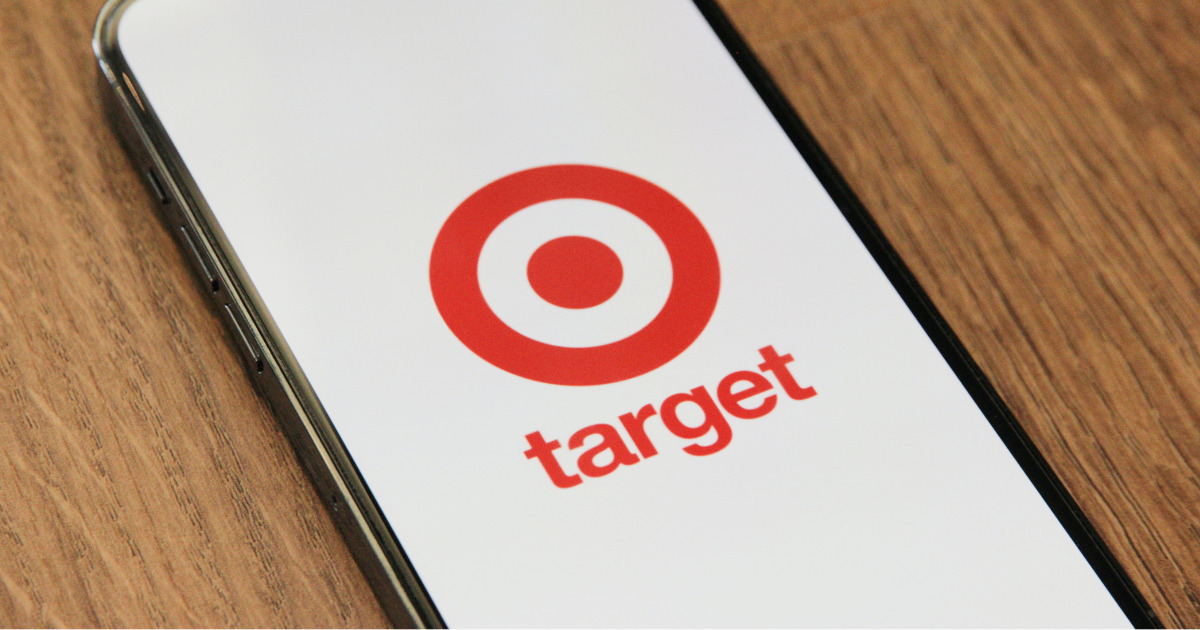Since search ads can be started with a low budget, they are used by many companies regardless of their size.
Many people who have started search advertisements are probably wondering, “How can I display my company’s advertisements at the top of the search results screen?”
The display order of advertisements is determined by the “ad rank” calculated for each auction.
In other words, it is necessary to understand how “ad rank” is determined.
In short, ad rank is calculated by multiplying your bid by your quality score.
Specifically, you can increase your ad rank by increasing your bid or increasing your quality score.
This article provides detailed information on the following topics:
Web marketers who are entrusted with search ads should have a thorough understanding of how to get their ads displayed in the top positions.
Table of contents
What is search ad (search-linked advertisement)?
When there is something that people want to find out or are curious about, many users use Google or Yahoo searches.
Search advertisement is a service that displays advertisements on the search results screen based on the keywords entered by the user.
Search ads are also called search-linked ads and have the following characteristics:
Services that are famous for search-linked advertising include Google Ads and Yahoo! Ads.
Both are systems in which ads are displayed based on keywords searched by users on search engines.
Below, we will explain about Google Ads.
Effects and points to note when displaying high-ranking search ads
What are the benefits of being ranked high in search ads?
The bottom line is that your click-through rate will increase.
A study published by Search Engine Watch in 2014 summarized the relationship between the display position of PPC (Pay Per Click) ads and click-through rate (CTR).
From the article, you can read the relationship between position and click rate in PPC advertising.
- The click rate for the first ad displayed was 12.2%
- The second ad shown had a click rate of 1.5%
- 0.2% or less for the third and subsequent ones
You can see that there is a big difference in click rate between the first and second click rates, and it gets even smaller after the third.
In other words, placement is very important when it comes to search ads.
However, if your ranking on the search page improves and the number of clicks increases, you will incur costs corresponding to the number of clicks, so be sure to keep this in mind and secure a budget.
In addition, even if the click-through rate (CTR) is high, the CVR (Conversion Rate), which is the result of business results such as product purchases and applications, may not be high.
If your CTR is high but your CVR is lower than expected, consider reviewing your keywords and targets, and improving your landing pages.
While operating search ads, identify areas for improvement by analyzing CTR and CVR, and thoroughly implement improvement measures.
So how is the ranking of search ads actually determined?
In the next chapter, we will explain how the ranking of search ads is determined, citing two important factors.
You need to understand this in order to actually improve the ranking of your search ads, so please refer to it.
Mechanism that determines the ranking of search ads
When a user performs a search, the “ad rank” of each ad related to that keyword is instantly calculated, and ads with a high ad rank are displayed at the top.
Please note that ad rank is determined by the order in which ads are displayed, not by their display location (top or bottom of the search screen).
This is because some keywords do not have ad space at the top.
In other words, if the display rank is 1st, it will be displayed at the top of the entire ad space, so keep in mind that it may be displayed at the bottom.
Now, let’s take a closer look at Ad Rank, which determines the placement of ads.
The formula for calculating ad rank is the multiplication of “bid price” and “quality score.”
This ad rank value determines the placement position.
Before we give specific examples, let’s learn about bids and quality scores.
About bid price
To place a search ad, you need to set a bid.
Bid is the maximum amount you are willing to pay for a click on your ad.
It is also called the maximum cost per click because it is the maximum amount that you can pay.
The actual cost per click will not exceed the bid price (=maximum bid).
In most cases, you’ll end up paying less than the bid you set.
There are two ways to set the bid price: “Individual bid setting” and “Automatic bidding”.
Individual bidding allows you to set your own bids for each keyword.
On the other hand, if you use automatic bidding, Google’s system will automatically adjust your bids based on your goals.
For example, if your goal is conversions, the keyword bid will be increased to increase conversions.
Therefore, automatic bidding may result in higher cost per click.
About quality score
Quality Score is a measure of the overall quality of your ad.
Quality Score is determined by Google for each keyword you are bidding on.
The rating is on a scale of 1 to 10, with 10 being the best value.
Let’s take a look at what Google explains about Quality Score.
Quality score is an indicator of the quality of your ads, keywords, and landing pages. The higher your Quality Score, the lower your bids and the higher your ad placement.
Source: Google Ads Help “Quality Score”
The key point is that if your quality score is high, your ad ranking may improve without setting a high bid.
So, how can you check the quality score of the ads you are currently running?
Please follow the steps below to check.
For Google Ads, perform the following operations from the menu on the admin screen.
- Click “Keyword” and “Search keyword” from the menu, then click “Display item icon” at the top right of the table.
- Open the quality score field.Check the eight items and click “Apply”.
You can check the following eight items related to quality score and display each item in table format.
8 items related to quality score | |
quality score | This is an estimated value that shows the relevance between the user who entered the keyword and the “ad, keyword, landing page.” |
Quality score (history) | Quality scores change daily. Displays the last seen quality score for the reporting period. |
Estimated click rate | This is an indicator of the likelihood that an ad will be clicked when displayed, and is calculated based on past performance. Estimated click-through rate is one of the factors that determines your quality score. |
Estimated click rate (history) | Estimated click-through rate changes daily. Displays the last seen quality score for the reporting period. |
Landing page usability | This is an indicator that shows the relationship between the “user” and the “landing page displayed after clicking on the ad.” Specifically, the relevance of the “content of the linked landing page” to the “keywords entered by the user” and “the usability of the landing page” are evaluated. The usability of your landing page is one of the factors that determines your quality score. |
Landing page usability (history) | The usability of landing pages changes daily. Displays the last seen quality score for the reporting period. |
Ad relevance | This is an index that shows the high degree of relevance between the “keyword” and the “message included in the ad.” If an ad is deemed too general or too specific, it will receive a lower rating. Ad relevance is one of the factors that determines your quality score. |
Ad relevance (history) | Ad relevance changes daily. Displays the last seen quality score for the reporting period. |
As we have already explained, by increasing your quality score, you can aim for higher rankings while reducing advertising costs.
To give you a more concrete idea of this, in the next chapter we will use actual numbers to explain the process by which ad ranks and placement positions are determined.
Understand with numbers! How ad rank is determined
Now, let’s use specific numbers to understand how ad rank is determined.
Again, ad rank is determined by multiplying your bid by your quality score.
Ad Rank = Bid × Quality Score
When a user searches, the search engine lists ads associated with the keyword.
Advertiser | bid price | quality score |
Advertisement A | 250 | 3 |
Advertisement B | 170 | 8 |
Advertisement C | 100 | 5 |
After listing, the ad rank will be calculated instantly and the ranking will be determined.
Advertiser | bid price | quality score | advertising rank | rank |
Advertisement A | 250 | 3 | 750 = 250 × 3 | 2 |
Advertisement B | 170 | 8 | 1360 = 170 × | 1 |
Advertisement C | 100 | 5 | 500 = 100 × 5 | 3 |
The cost per click is also calculated at the same time.
The formula for calculating cost per click is as follows:
Cost-per-click = Next ad rank ÷ Advertiser quality score +1
Advertiser | bid price | quality score | advertising rank | rank | cost per click |
Advertisement A | 250 | 3 | 750 = 250 × 3 | 2 | 168 ≒ 500 ÷ 3 +1 |
Advertisement B | 170 | 8 | 1360 = 170 × | 1 | 95 ≒ 750 ÷ 8 +1 |
Advertisement C | 100 | 5 | 500 = 100 × 5 | 3 | minimum cost per click |
Here you can sort by ranking.
rank | Advertiser | bid price | quality score | cost per click |
1 | Advertisement B | 170 | 8 | 94 |
2 | Advertisement A | 250 | 3 | 167 |
3 | Advertisement C | 100 | 5 | minimum cost per click |
Ad A has the highest bid, but because its quality rank is low, its placement position (ad rank) has dropped to second place.
On the other hand, Ad B has a high quality score, so it ranks first. Ad A has the highest bid, but because its quality rank is low, its placement position (ad rank) has dropped to second place.
Another thing to pay attention to is the cost per click.
Even though Advertiser B is ranked 1st, the cost per click is lower than Advertiser A, which is ranked 2nd.
A high Quality Score not only helps you rank better, but also potentially lower your cost-per-click.
In other words, you can achieve efficient advertising operations that can acquire many users with a small budget.
In the next chapter, we will explain specific ways to improve the ranking of your search ads.
Two ways to increase the ranking of your search ads
Next, we will introduce two ways to increase your ad rank and improve your placement.
Please refer to it.
1. Increase your bid
As you can see from how ad rank is calculated, setting a higher bid can potentially increase your ad rank.
However, increasing your bid will require a corresponding budget.
You must also carefully decide how much to increase your bid based on your advertising budget.
However, if the bid price you set is lower than the “minimum bid price”, the ad will not be displayed in the first place, so please be careful about this point.
In search ads, a minimum bid price is set for keywords with a high search volume, and the minimum bid price tends to be set higher as the search volume is higher.
Note that there is no minimum bid price set for keywords with low search volume.
In addition, the quality score described below has a large impact on determining ad rank.
Remember that no matter how high your bid is, if your quality score is low, your ranking will not improve.
2. Increase your quality score
If you want to increase the ranking of your search ads while keeping advertising costs down, improve your quality score.
The quality score mainly consists of three elements:
Therefore, by improving each element, you can increase your quality score.
All three elements are related to the “user first” policy advocated by Google (how beneficial is it to users?), and are elements that must be understood in order to operate Google Ads.
So let’s talk about the three factors that determine quality score.
Element 1. Estimated CTR
Estimated click-through rate is an indicator that shows the degree to which ads displayed for the keywords associated with the ad are clicked.
Instead of being a percentage indicator, it is displayed in three levels: “above average,” “average,” and “below average.”
If it is “average” or “above average,” there is no major problem, but if it is “below average,” it means that the users who entered the keyword are not responding to your ad or have a small response. .
To improve your estimated click-through rate, include keywords in your ad title and review your ad group’s keyword list.
Element 2. Ad Relevance
Ad relevance is the degree to which the keywords a user enters are related to the message within the ad.
When an ad is highly relevant, it means that the keyword and ad are perceived to be related to the user.
It is displayed in three levels: “Above average”, “Average value”, and “Below average”.
Including keywords in the message within your ad can make your ad more relevant.
Additionally, if there are too many keywords set in an ad group, the relevance of the ad will decrease, so it is also effective to narrow down the keywords.
Element 3. Landing Page Usability
This is an indicator that shows how useful the landing page that appears when a user clicks an ad is useful to the user.
It is displayed in three levels: “Above average”, “Average value”, and “Below average”.
A landing page like the one below will be judged to satisfy users, and the usability of the landing page will be highly evaluated.
- The content is highly relevant and useful to the keyword/message in the ad.
- Easy to operate on mobile environments such as smartphones as well as computers
- Landing page loading time is short
If the rating is “below average”, improve your landing page from the three points above.
[Summary] In order to display high ranking advertisements, it is necessary to increase the advertisement rank.
Search ads is a service that displays advertisements corresponding to keywords that users enter into search engines.
By using keywords, you can serve ads that are relevant to the user’s interests, so you can get users to click on your ad and be directed to a landing page.
It is clear that the higher the search screen display, the higher the click-through rate, so it is important to determine how high the search ads are placed.
Furthermore, it is important to come up with a way to rank as high as possible with low advertising costs, and in the case of Google Ads, you must strive to improve your quality score.
Improve your quality score by improving the ad title, message, landing page, and even the ad group’s keyword list to make it more useful to users.
Accumulate know-how to increase your ad rank by implementing specific measures and repeating improvements.




